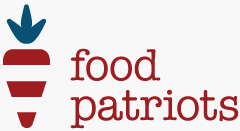"Star light, star bright, I wish there was a way to see you tonight."
As society extends more and more of its activity hours past daylight, there is a growing problem of light pollution. Light pollution is defined
by Wikipedia as:
- Degradation of photic habitat by artificial light.
- The alteration of light levels in the outdoor environment (from those present naturally) due to man-made sources of light.
- Light pollution is the introduction by humans, directly or indirectly, of artificial light into the environment.
For most of human history, the phrase “light pollution" would have made no sense. Now most of humanity lives under intersecting domes of reflected, refracted light. Based on calculations, two-thirds of humanity lives under skies polluted with light, and one-fifth can no longer see the Milky Way.

On December 5, 2012,
NASA released a new look at our planet at night. This global composite image, constructed using cloud-free night images from a new NASA and National Oceanic and Atmospheric Administration (NOAA)
satellite, which shows light from both natural and human-built phenomena in never seen before detail.
There are several reasosn to be concerned about the excessive levels of light in our night skies. Excess light burns additional energy. According to
recent studies, over 30% of the outdoor illumination is wasted by being misdirected towards the sky. Annually, that is nearly $4.5 billion in the USA for the cost of excessive lighting.
Progressive cities are beginning to look at the need for light, and light that casts itself in the appropriate direction. For example, in Harmony, Florida, unique dome shaped street lights reflect light only downward instead of up into the sky. The planned community southeast of Orlando consulted with lighting engineers to design efficient, effective, and pleasing lights. The result has been national distinction as a
Dark Sky Development, as well as three
University of Florida IMAGE Awards for programs that effectively communicate environmental information.

Besides the energy savings, darker skies also are safer for wildlife. “Lights at night are a serious threat to nocturnal wildlife,”
Jim Fisher of the International Dark-Sky Association explains. “Too much light affects mammals, frogs, salamanders, other amphibians, reptiles, insects, fish and, in fact, entire ecosystems.
“When sea turtles hatch, for instance, they are drawn to the sea by its natural reflective glow and turn away from dark grassy beach areas. However, with so many development lights, they often become confused and go in the wrong direction, only to get run over on the road.”
Birds are also affected by light.
The Fatal Light Awareness Program estimates that in North America, at least 100 million birds collide with man made structures. Migratory birds often fly at night, depending on light from the stars and moon; they are confused by lights emanating like thousands of moons from cities and towns.
Lastly, the biological effects of light exposure at an inappropriate time (during the normal dark period) has potentially negative physiological consequences. The human
circadian system can fall out of synchronization with the 24-hour solar day, negatively affecting human health, including metabolism and learning comprehension. Additionally,
melatonin synthesis can be disrupted by excessive light. Melatonin is a free radical and antioxidant. Studies suggest that lower melatonin levels are linked to cancer and DNA damage.
One organization that is working to reduce the amount of light pollution is
GLOBE at Night. They offer several events throughout the year, including the popular Adopt a Street program. Light Pollution impacts more than just seeing (or not) the stars in the night sky and is a growing concern. The community of Harmony, Florida is host to the 2013
Dark Sky Festival. The website offers a number of resources for concerned citizens.







































